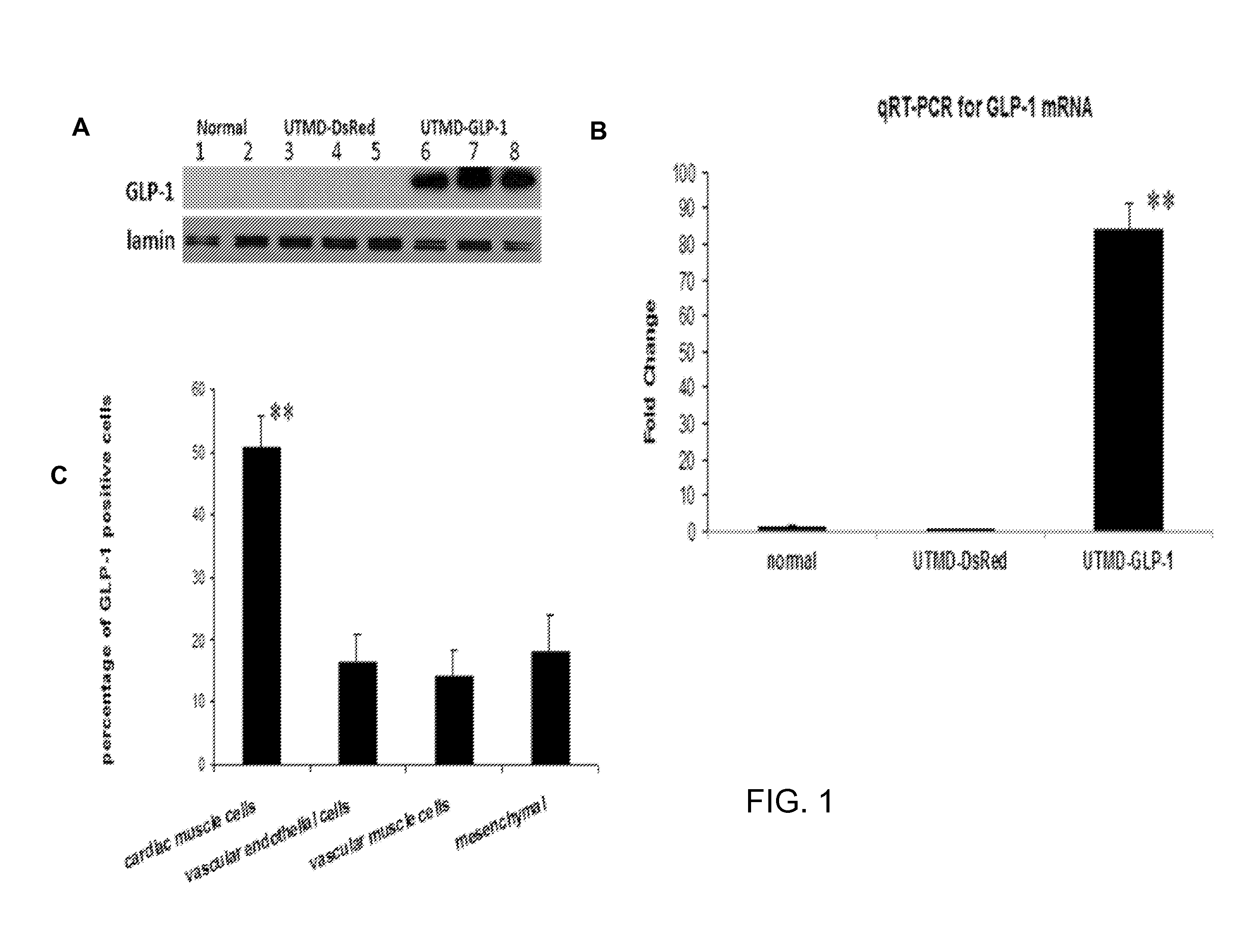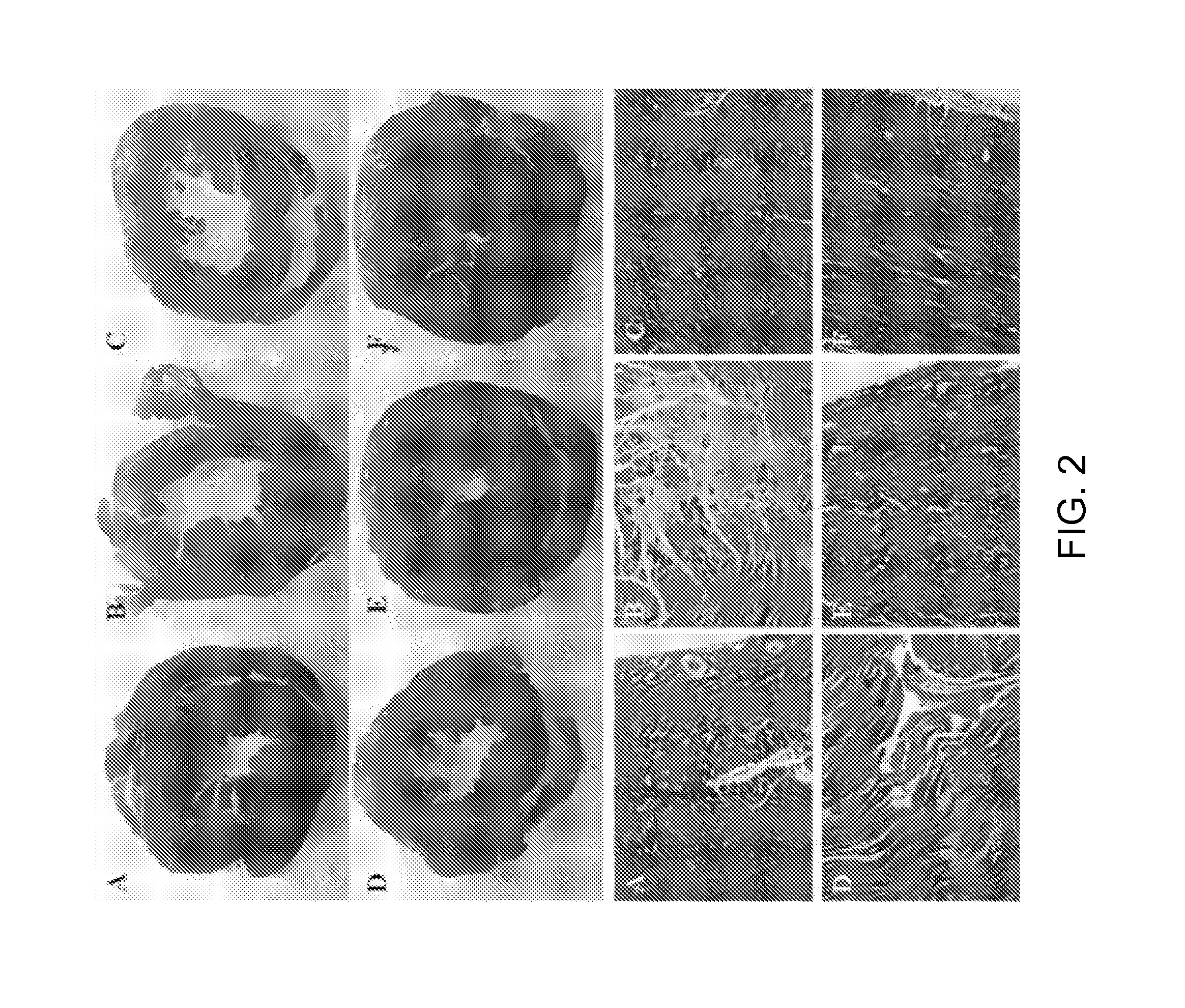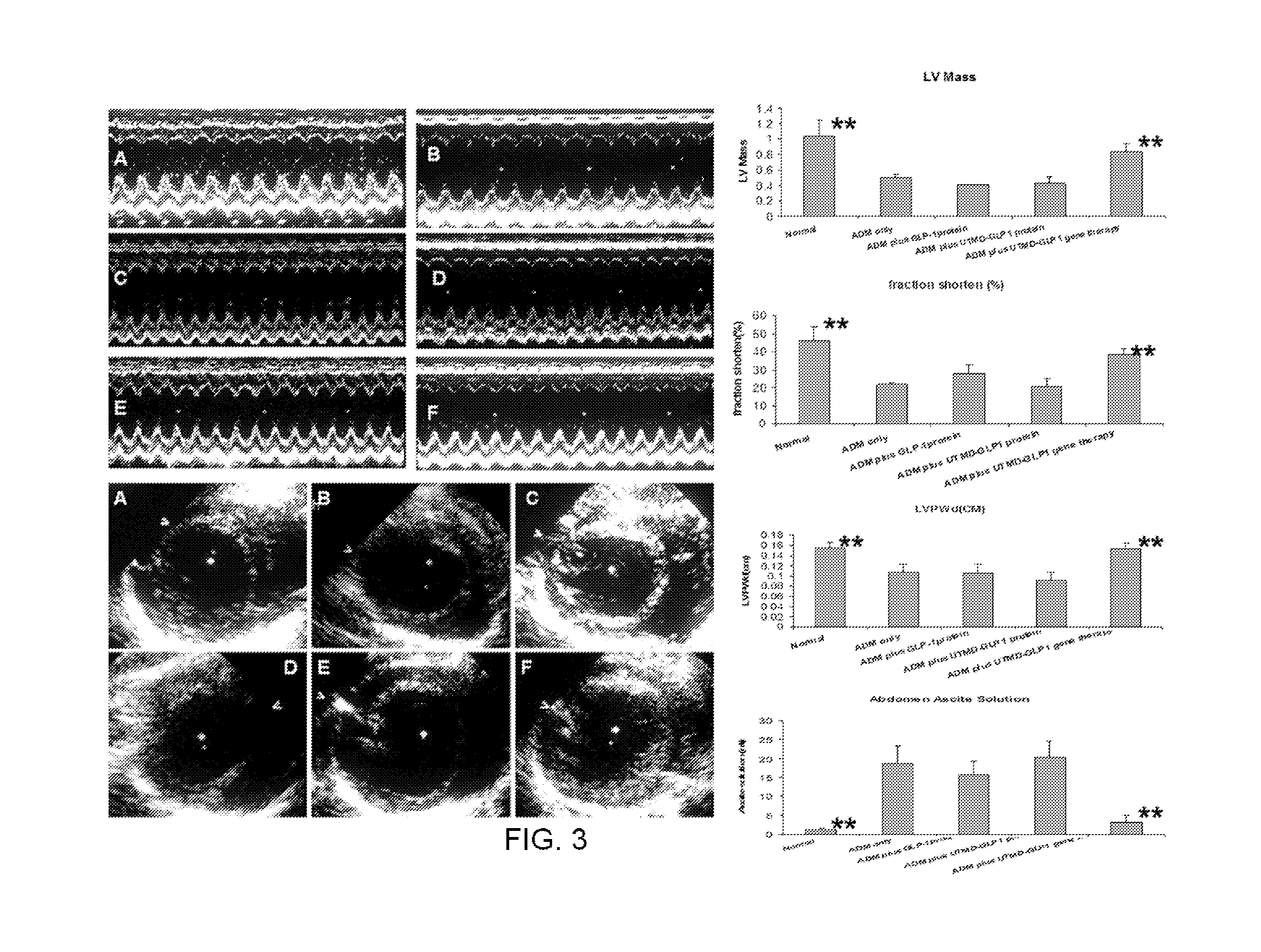Nuclear localization of glp-1 stimulates myocardial regeneration and reverses heart failure
a technology of myocardial regeneration and nucleus, applied in the field of cell biology, molecular biology, medicine, can solve the problems of controversy over whether or not cardiomyocyte regeneration can be sufficient to reverse established cardiomyopathy, and no data have been published regarding the effect of glp-1 gene delivery on heart failur
- Summary
- Abstract
- Description
- Claims
- Application Information
AI Technical Summary
Benefits of technology
Problems solved by technology
Method used
Image
Examples
example 1
Exemplary Materials and Methods
[0250]Animal Protocols and UTMD
[0251]All animal studies were performed in accordance with National Institute of Health (NIH) recommendations and the approval of our institutional animal research committee. Male Sprague-Dawley rats (230-270 g) were anesthetized with intraperitoneal ketamine (60 mg / kg) and xylazine (5 mg / kg), and a polyethylene tube (PE 50, Becton Dickinson, Franklin Lakes, Tenn., USA) was inserted into the right internal jugular vein by cut-down.
[0252]Animal protocol-1: A total of 18 normal rats received one of 3 treatments: (1) no treatment (normal control rats, n=6); (2) UTMD with pXL-BASII-CI-DsRed / pCI-hyPB (n=6); (3) UTMD with pXL-BASII-CI-GLP-1 / pCI-hyPB (n=6), all were killed at 4 weeks after UTMD. The thymidine analog, 5-bromo-2-deoxyuridine (BrdU) (100 mg / kg, Sigma, St Louis, Mo.) intraperitoneal injected 6 hours prior to killing.
[0253]Animal protocol-2: A total of 60 rats were divided into: (1) no treatment (normal control rats,...
example 2
Myocardial Regeneration in Adriamycin Cardiomyopathy by Nuclear Expression of Glp1 Using Ultrasound Targeted Microbubble Destruction
[0273]There are nearly 5.7 million Americans with heart failure (HF) and approximately 670,000 new cases are diagnosed in the U.S. each year. HF affects people of all ages, from children and young adults to the middle-aged and the elderly (Roger, et al., 2012). Traditional medical therapy for HF is targeted toward relief of symptoms and blockade of neurohormonal activation that propagates HF. When medical therapy fails, heart transplant or left ventricular assist devices may be appropriate, but are limited by donor supply, immunosuppression, expense and complications. The ideal goal for HF therapy is myocardial regeneration, which has become a major goal of HF therapy since the discovery that cardiomyocytes are not terminally differentiated. There are various theories about the origin of regenerating cardiomyocytes, including self-replication of pre-exi...
example 3
GLP-1 Plus Thymosin Beta 4 Stimulates Regeneration of Adult Rat Cardiac Muscle and Reversal of Myocardial Ischemic Injury
[0291]It is estimated that acute myocardial infarction (MI) afflicts 1.3 million Americans every year. Approximately 10% of those patients will die from the MI, typically from ventricular arrhythmias, pump failure, or myocardial rupture. In survivors, infarcted myocardium is replaced by fibrous scar tissue, leading to progressive left ventricular (LV) remodeling and congestive heart failure. Although prompt revascularization of the occluded coronary artery by percutaneous coronary intervention has been shown to reduce mortality, the myocardial microcirculation may not be completely reperfused due to the “no-reflow” phenomenon, and some degree of myocardial necrosis typically remains. Therefore, a major goal of therapy for acute MI has been to develop strategies for regeneration of cardiomyocytes and blood vessels in the damaged area of the heart. Novel strategies ...
PUM
| Property | Measurement | Unit |
|---|---|---|
| temperature | aaaaa | aaaaa |
| ionic strength | aaaaa | aaaaa |
| temperature | aaaaa | aaaaa |
Abstract
Description
Claims
Application Information
 Login to View More
Login to View More - R&D
- Intellectual Property
- Life Sciences
- Materials
- Tech Scout
- Unparalleled Data Quality
- Higher Quality Content
- 60% Fewer Hallucinations
Browse by: Latest US Patents, China's latest patents, Technical Efficacy Thesaurus, Application Domain, Technology Topic, Popular Technical Reports.
© 2025 PatSnap. All rights reserved.Legal|Privacy policy|Modern Slavery Act Transparency Statement|Sitemap|About US| Contact US: help@patsnap.com



